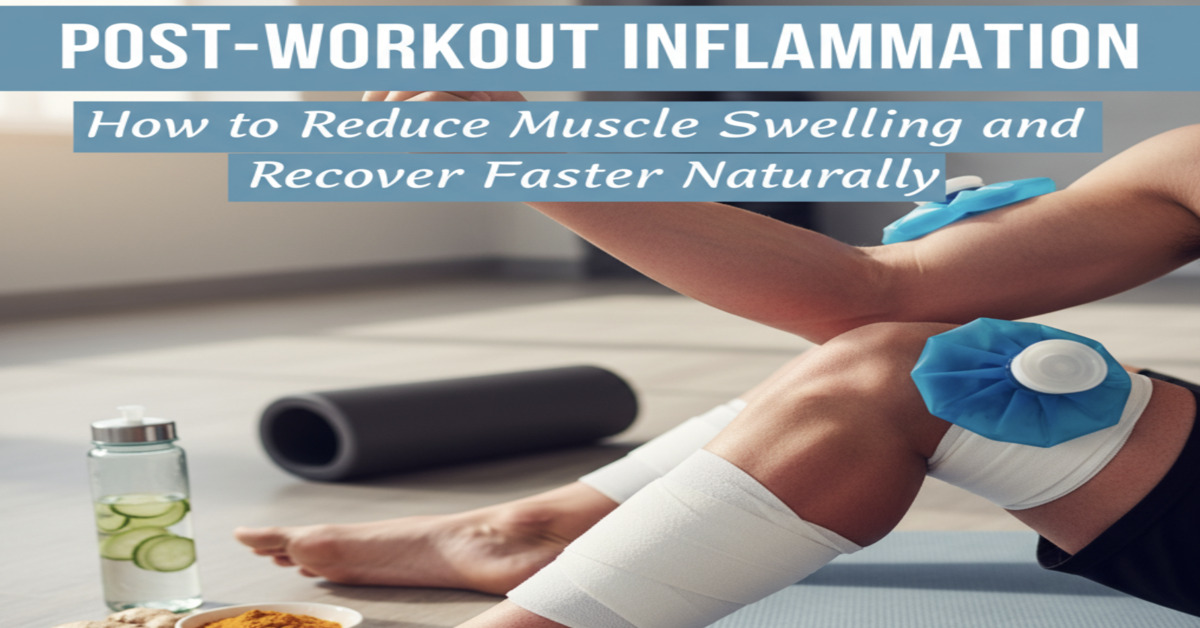Introduction: Why Post-Workout Inflammation Matters
Muscle soreness after a tough workout isn’t always a bad sign — it’s your body’s natural healing response.
However, excessive inflammation can slow recovery, cause prolonged soreness, and limit performance gains.
In the United States, where more than 60% of adults engage in moderate exercise, post-workout inflammation has become a common challenge among fitness enthusiasts. The good news: with science-backed natural strategies, you can reduce inflammation, speed up recovery, and get back to training stronger.
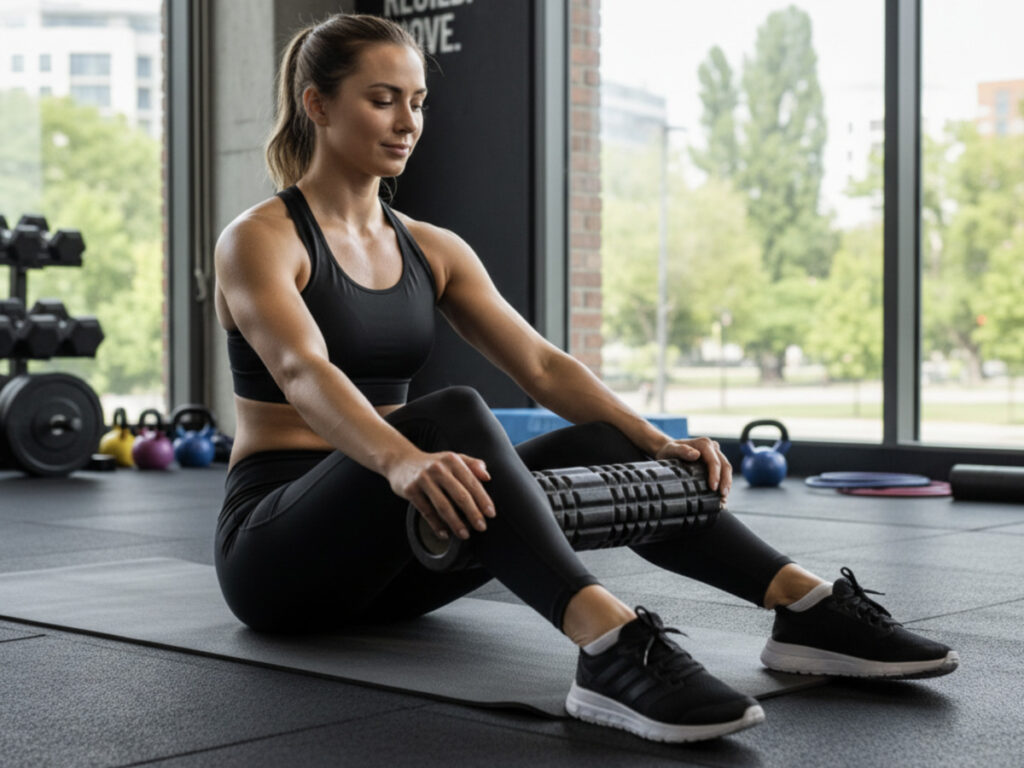
Understanding Post-Workout Inflammation
When you exercise — especially resistance or high-intensity workouts — micro-tears occur in muscle fibers. The body triggers an inflammatory response to repair these tissues.
This process involves immune cells, cytokines, and enzymes rushing to the affected muscles to begin rebuilding — but when inflammation is too high or prolonged, it can cause stiffness, swelling, and fatigue.
Signs of Excessive Post-Workout Inflammation
- Persistent soreness (beyond 72 hours)
- Visible swelling or puffiness
- Reduced range of motion
- Fatigue and delayed performance
Statistic: According to Sports Medicine Journal (2024), chronic inflammation after workouts can delay muscle recovery by 30–40%, especially in those lacking proper nutrition or rest.
The Science Behind Muscle Swelling and Recovery
The inflammatory process starts with muscle microtrauma, followed by the release of pro-inflammatory cytokines (IL-6, TNF-α).
This attracts white blood cells to remove damaged tissue and initiate repair.
Over time, anti-inflammatory compounds (IL-10, TGF-β) balance the process — leading to muscle adaptation and growth.
If this balance is disrupted, chronic inflammation sets in, impairing recovery.
Expert Quote:
“Inflammation is essential for adaptation — but the goal is controlled inflammation, not complete suppression.”
— Dr. Laura Kim, PhD, Exercise Physiology, Stanford University
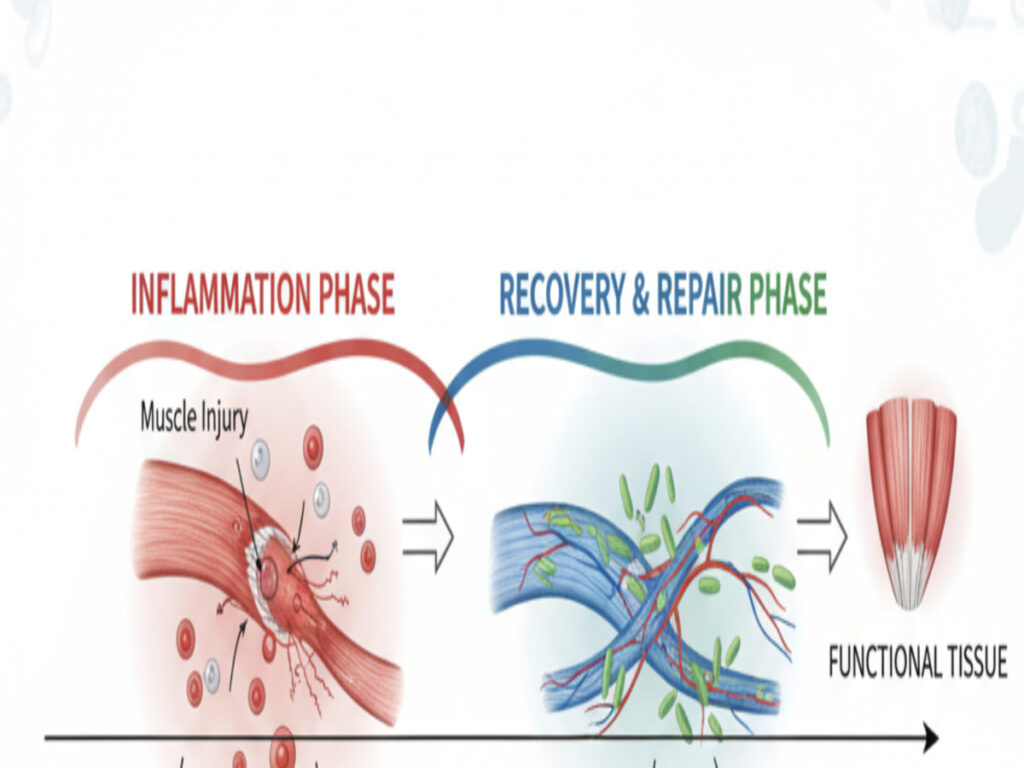
Benefits and Drawbacks of Inflammation
| Healthy Inflammation (Acute) | Chronic Inflammation (Excessive) |
|---|---|
| Triggers muscle repair | Delays recovery |
| Strengthens immune defense | Increases soreness and fatigue |
| Enhances adaptation | Leads to tissue breakdown |
| Improves future performance | May cause joint pain and overtraining |
Key takeaway: The goal isn’t to eliminate inflammation but to optimize it for faster muscle healing.
Natural Anti-Inflammation Mechanisms
The body naturally regulates inflammation through antioxidants, omega-3 fatty acids, and adequate sleep.
You can enhance this process by integrating these recovery pillars:
- Cold Therapy (Cryotherapy or Ice Baths) – Reduces swelling by constricting blood vessels.
- Active Recovery – Light movement increases circulation and reduces stiffness.
- Compression Garments – Improves venous return and reduces muscle fatigue.
- Sleep Optimization – Growth hormone released during deep sleep promotes tissue repair.
- Hydration – Flushes out inflammatory toxins and aids nutrient transport.
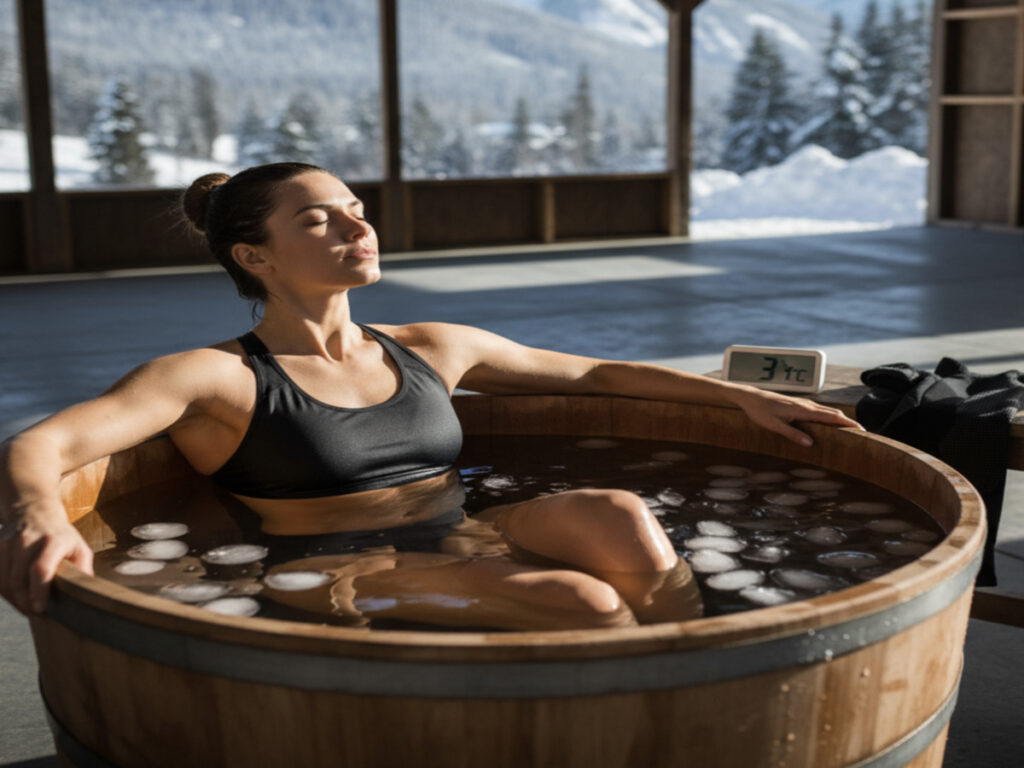
Best Nutrition Strategies for Faster Recovery
Nutrition is the most powerful tool for controlling inflammation naturally.
1. Prioritize Anti-Inflammatory Foods
Include foods rich in antioxidants, omega-3s, and phytonutrients:
- Fatty fish (salmon, sardines, mackerel)
- Berries and cherries
- Leafy greens
- Turmeric and ginger
- Extra virgin olive oil
- Nuts and seeds
2. Optimize Protein Intake
Protein supports muscle repair and reduces recovery time.
Aim for 25–30g of protein per meal from lean meats, eggs, and plant-based sources.
3. Balance Omega-3 to Omega-6 Ratio
Most Americans consume too many omega-6 fats (from fried and processed foods).
A ratio closer to 1:2 or 1:3 improves recovery and reduces systemic inflammation.
4. Stay Hydrated
Dehydration worsens inflammation.
Target 2.5–3 liters of water daily, with electrolytes after intense sessions.
Expert Quote:
“Nutrition drives recovery as much as training intensity. Anti-inflammatory diets enhance performance longevity.”
— Dr. Rachel Greene, Registered Dietitian, ACSM Certified Nutrition Specialist
Top Lifestyle Habits to Reduce Muscle Swelling
- Sleep 7–9 hours nightly to promote natural healing hormones.
- Include mobility work (yoga or stretching) post-training.
- Avoid excessive alcohol and processed sugar, which heighten inflammation.
- Incorporate daily walking or low-impact cardio for blood circulation.
- Take rest days seriously — recovery is part of the training plan.
Suggested image placement: Athlete doing yoga or light stretching in recovery gear.
Actionable Recovery Checklist
☑ Include omega-3 foods daily
☑ Hydrate before and after workouts
☑ Add turmeric or ginger to meals
☑ Sleep 7–9 hours
☑ Perform active recovery 1–2 times weekly
☑ Avoid overtraining and monitor soreness
Anti-Inflammatory Foods Table
| Food | Key Nutrient | Benefit |
|---|---|---|
| Salmon | Omega-3 | Reduces inflammation, supports joint health |
| Blueberries | Anthocyanins | Powerful antioxidants for tissue repair |
| Spinach | Magnesium | Aids muscle relaxation and recovery |
| Turmeric | Curcumin | Potent anti-inflammatory agent |
| Chia Seeds | Omega-3, fiber | Promotes healing and hydration |
| Tart Cherries | Polyphenols | Reduces soreness and muscle swelling |
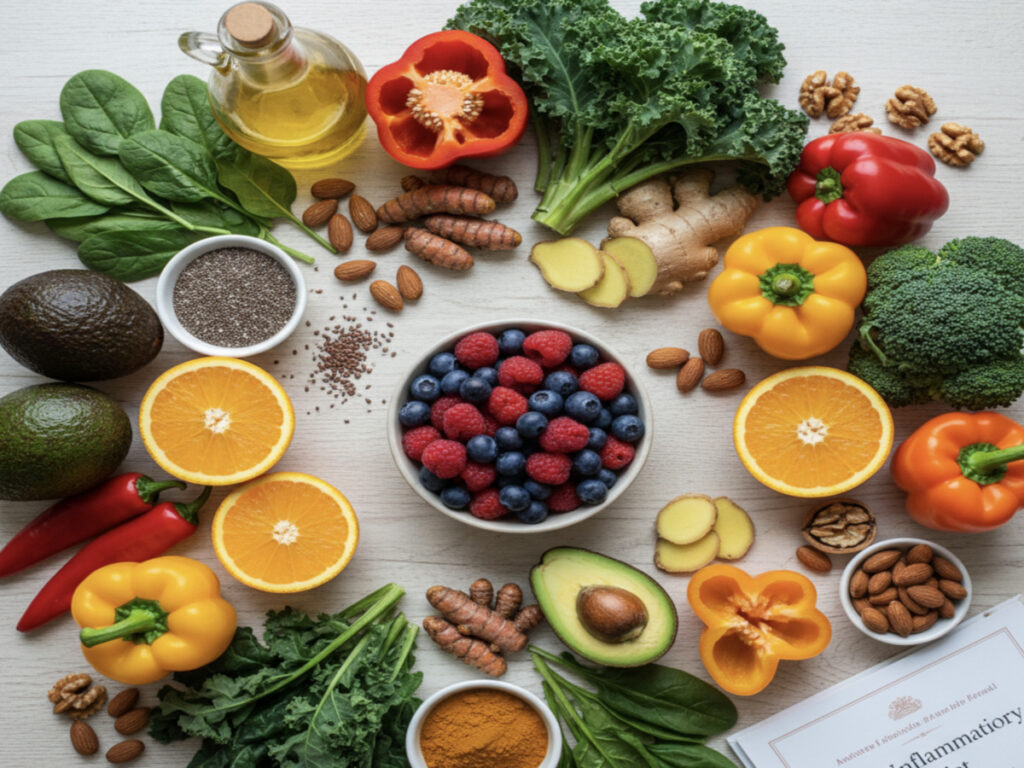
Expert Insights on Recovery and Inflammation
“Consistent recovery practices can shorten downtime and increase performance gains.”
— Dr. Eric Daniels, Sports Medicine Specialist
“Ignoring post-workout inflammation leads to chronic fatigue and injury cycles — recovery is as important as training.”
— Dr. Maya Reynolds, Exercise Physiologist
Common Myths & FAQ
Q1: Should I take painkillers to reduce inflammation?
A: Avoid frequent NSAID use — it can interfere with muscle growth and gut health. Opt for natural anti-inflammatory foods and recovery methods.
Q2: Is soreness a sign of a good workout?
A: Not always. Mild soreness is fine, but chronic pain signals poor recovery or overtraining.
Q3: Are ice baths necessary?
A: Not mandatory but beneficial after intense sessions. Alternate with active recovery for best results.
Q4: Can supplements help?
A: Omega-3s, curcumin, magnesium, and tart cherry extract are proven to aid recovery.
Authoritative Resources
- National Library of Medicine
- American College of Sports Medicine – Recovery Guidelines
- Harvard Health – Natural Inflammation Control
Other interesting Articles
- Muscle Maintenance After 40: Strength Strategies to Prevent Age-Related Muscle Loss (Sarcopenia Fix)
- Rucking & Weighted Walks: The Simple Strength-Cardio Hybrid Revolution
Conclusion & Call-to-Action
Post-workout inflammation is your body’s way of adapting — but managing it smartly determines how fast you bounce back.
With the right nutrition, hydration, and lifestyle habits, you can recover faster, reduce soreness, and enhance muscle gains naturally.
Next Step: Start integrating anti-inflammatory foods, active recovery, and sleep optimization into your weekly routine.
Your muscles — and long-term performance — will thank you.

